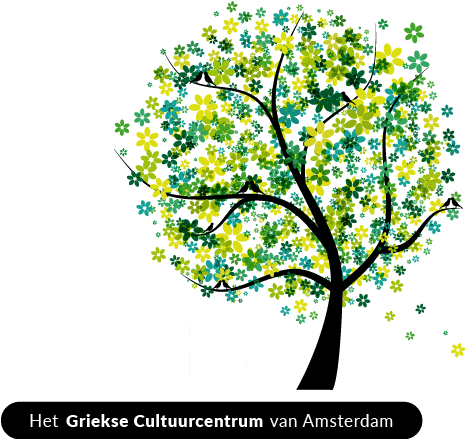No products in the basket.
First May in Greece and … what do the donkeys on the rooftops?
May Day is one of the few holidays that do not carry any religious meaning. Also, it is not a day connected just to labour rights. Since antiquity it is mainly a day related to the fruitfulness of the earth, the end of the winter and the coming of the summer. That is why it is filled with customs or ceremonies of festive character, which, although they differ from place to place, come to our day.
First May & the hidden symbolism of the flower wreaths.
In Greece the oldest but also most common custom is to make a flower wreath. People use flowers but mostly green branches, they hang it on the door or the balcony and on June 23, the day of St. John Klidonas, they burn it in a festive atmosphere.
On the island of Serifos, they do that the evening before the First of May and they add in it nettles, barley and garlic. Each one of them has a symbolic meaning. Something similar happened in parts of Asia Minor where people used to put on the May wreath apart from flowers, a garlic against the evil eye, a thorn for the enemy, and an ear of corn for a good harvest.

This last habit seems to have been the rule for all traditional rural societies where the May Day wreath was not just a decorative element but more than that a symbolism and a silent request. That’s why people chose to make their May Day wreath with greenery and whatever contained fruit (fig-tree branches with figs, almond branches with almonds, pomegranates branches with pomegranates ….), however without omitting the above symbolic elements.
On Corfu, an island with many special traditions and habits and moreover with inhabitants who remain loyal to them, the inhabitants keep the tradition of Magioxilo, a trunk of cypress tree decorated with yellow daisies and green branches which is carried around the whole island. The Magioxilo is accompanied by young people who wear white trousers and shirts and red scarves, who are singing about the coming of spring and the regeneration of nature.
Of course some of the local customs are often strange, funny and without obvious explanation or symbolism.
First Μay on Naxos and … what do the donkeys do on the rooftops?
One of these is the custom on the island of Naxos to lift the donkeys to the rooftops. The donkeys are hoisted to the rooftop at night and they are taken again down in the afternoon of the first May.
And because the only sure thing is that the donkeys did not go up there alone or did not have wings in one night, we need to say that they were taken up there, always for the sake of the custom. Of course they always chose the easiest terraces and the most cooperative four-legged in order to make the whole thing easier and safer for the animal.
During the last years, the habit has been weaned as the public’s awareness of animals and their protection has increased.

Another belief related to May refers that the morning water and morning dew has purifying and refreshing powers.
In many regions (Aegean islands, Agrafa etc) on May Day, all pots containing water are emptied on the evening before. At dawn, girls take the pitchers and the flowers that they have gathered since the previous evening and they go to the well or the water spring. When they bring the May water home, everyone washes his face with it.
First May, Epirus: “the month of spells”
In Epirus, in some regions until today, the old custom is maintained and there are no weddings, since this day (etymologically) was associated with the spells (= mayia).
Since the whole month in Roman times was associated with the worship of the dead, in many regions of Northern Greece people still have the habit of going to the cemetery and cleaning the tombs from the wild-greens and often they make pies that they share with each other for the forgiveness of the souls of their loved ones.
Ritual fires, a celebration for all year round.
In other areas, the coming of May is celebrated with the well-known ritual fires that light up on the eve of May after sunset. Fire rituals traditionally had only one goal: to chase away bad luck, diseases and to ensure health and progress. In this case, they are combined with the persecution of winter and all the troublesome problems that come with the good weather, e.g. snakes, annoying insects, etc. Still, the atmosphere is festive with women dancing in circles around the fire and young people to jump over the fires. At the end, with a lit branch they carry the fire to their home, in order to chase also from there the winter, the snakes etc.
At the area of Florina (N Greece), the inhabitants never forget this day to ask the help of Saint Jeremiah, whose name day is at this day, in order to keep away snakes, mice, insects …

Does the First of May come together with hail?
But if there is something that really causes panic, it is not the snakes or mice, but the hail. Hail would cause a disaster for the farmers who are now waiting to see their plants bloom or give fruit. A Greek proverb says characteristically that “in the cursed place it ‘hails’ in May” (throws hail).
That’s why for a farmer it was considered as something normal to use various magical and superstitious means in order to keep such a disaster away. But beyond that they always tried to keep their “religious obligations” and they never forgot to pray for the protection of “their effort”, which is something that also secures tomorrow’s food of their families.
In many areas there is a “Saint “Protector” against the hail. Throughout Northern Greece, Macedonia, Thrace, etc., it is Saint Christopher and all keep the holiday during his name day (May 9)with reverence.
© Lato,
Het Griekse Taal– & CultuurCentrum van Amsterdam




